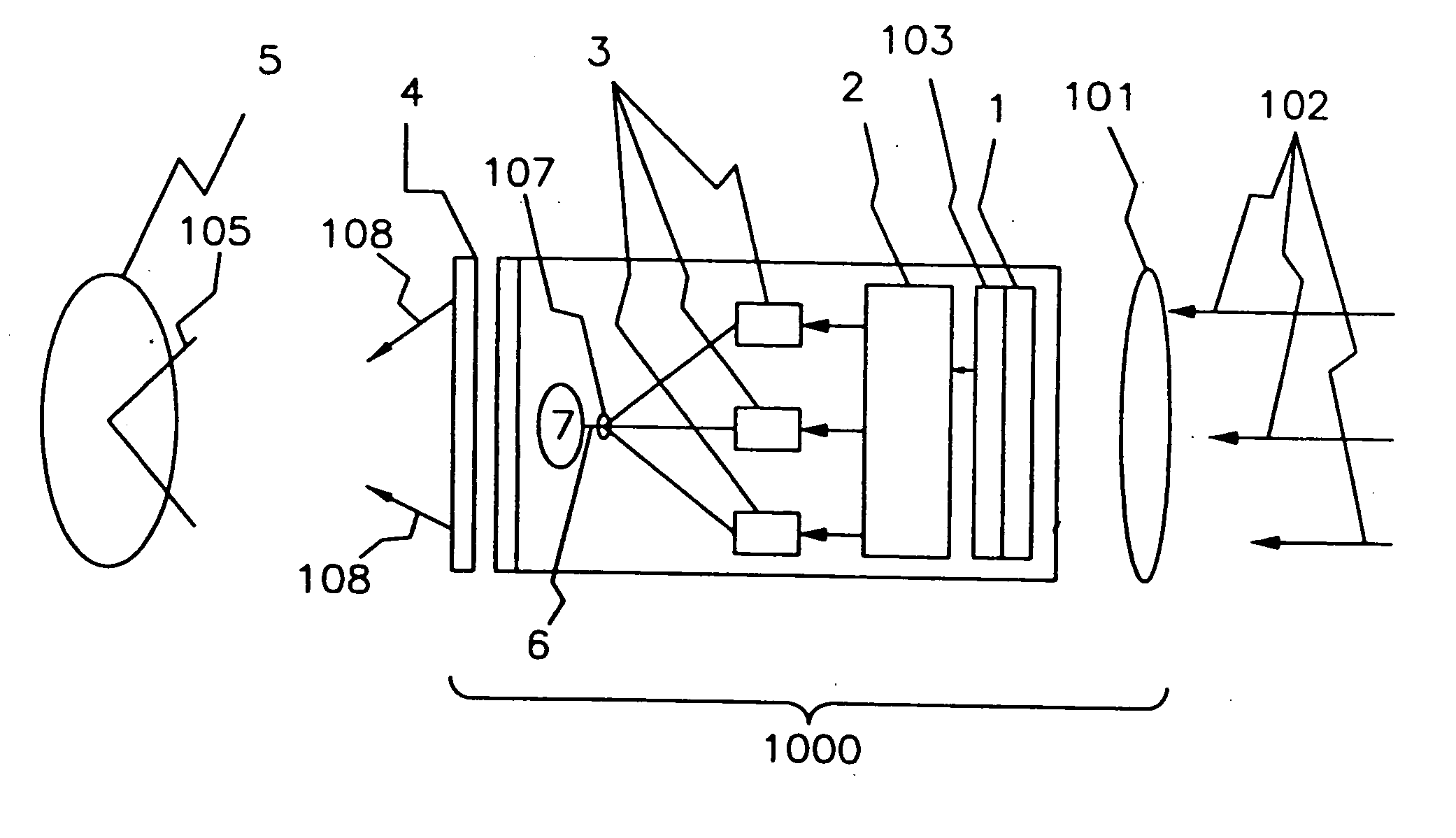Logarithmic light intensifier for use with photoreceptor-based implanted retinal prosthetics and those prosthetics
a technology of retinal prosthetics and logarithmic light intensifiers, which is applied in the field of retinal prosthetics, can solve the problems of unsuitable use for blind individuals with implanted retinal prosthetics, insufficient light power, and inability to arbitrarily increase light amplitude, so as to enhance retinal prosthetic performance, avoid damage thereto, and maximize electrical stimulation of retinal nerves or cells.
- Summary
- Abstract
- Description
- Claims
- Application Information
AI Technical Summary
Benefits of technology
Problems solved by technology
Method used
Image
Examples
second embodiment
[0051] A shutter (4) is part of the The shutter (FIG. 1, (4)) is of a mechanical design (old in the art), or an electronic shutter (4) (old in the art) or an electro-optical shutter (4) (old in the art). The shutter (4) cuts off light from the logarithmic light amplifier (1000) to the pupil (105) of the eye (5). This decreases the total time that light strikes the photoreceptors (FIG. 3a, (13), (14)), (FIG. 3b, 303) Consequently, the time during which the bipolar, or similar cells, are stimulated is decreased. Because the eye is not functioning as originally intended, the bipolar, or similar, cells are thought to need this “down-time” to continue to function properly.
[0052] An aspect of this invention is the use of two or more wavelengths to allow balanced biphasic stimulation with no net charge injection into the eye. As long as a biphasic type of electrical stimulation, where equal amounts of positive charge and negative charge in the form of ionic carriers or electrons or other ...
fourth embodiment
[0056] A fourth embodiment is that of the logarithmic light amplifier (1000) itself, without any special implantable photoreceptors. This last embodiment may require a low duty cycle when used with photoreceptors (FIG. 8, (81)) connected to an electrode (82) without any electronics. It relies upon the intrinsic capacitance of an oxidizable electrode, which acquires capacitance with the buildup of an insulating oxidized layer toward the ionizable fluid present in the eye as vitreous fluid, or fluid directly associated with the eye.
[0057] In a first set of embodiments, the addition of a shutter (FIG. 1, (4)) with an off time of from 0.5 ms to 10 ms, most preferably 2 ms provides a mechanism to provide that off time (FIG. 4, (47), (48)). However, in a second set of embodiments, the time each laser is on can be controlled by electronic means (old in the art) within the laser to provide equal positive pulses and negative pulses, i.e., equal with respect to total signed charge introduced ...
PUM
 Login to View More
Login to View More Abstract
Description
Claims
Application Information
 Login to View More
Login to View More - R&D
- Intellectual Property
- Life Sciences
- Materials
- Tech Scout
- Unparalleled Data Quality
- Higher Quality Content
- 60% Fewer Hallucinations
Browse by: Latest US Patents, China's latest patents, Technical Efficacy Thesaurus, Application Domain, Technology Topic, Popular Technical Reports.
© 2025 PatSnap. All rights reserved.Legal|Privacy policy|Modern Slavery Act Transparency Statement|Sitemap|About US| Contact US: help@patsnap.com



